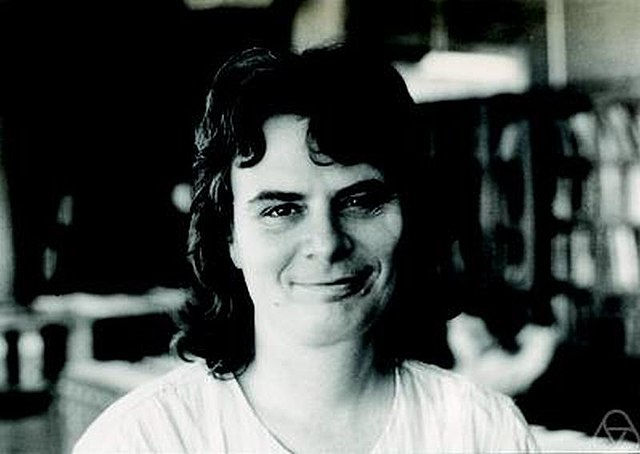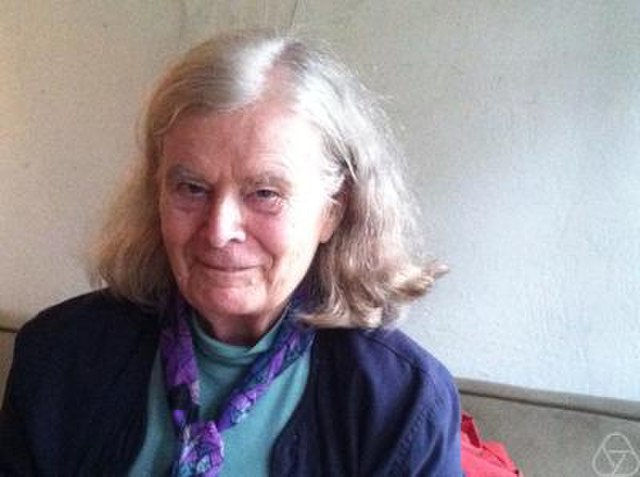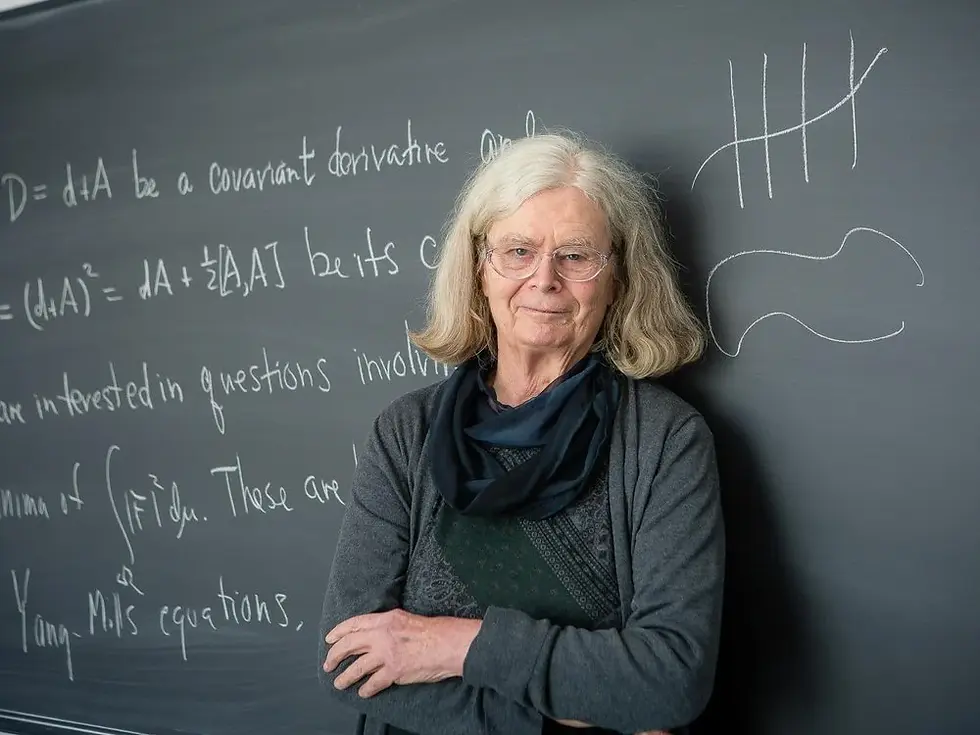Non-Linear: How Mathematical Lone Wolf Karen Uhlenbeck Found Her Pack
- Dale DeBakcsy

- Apr 25, 2023
- 7 min read
When you first walk into secondary school your first year and plop yourself nervously into a desk in the back of your geometry class (because you’re far too cool to sit in the front seats), one of the earliest things you’re asked to do is to grapple with geometric proofs. For many, it is a gruelling experience soon forgotten, but for a few it is a beautiful initiation into a world of rigor and logic, wherein you proceed from point A to point B with the inexorable accumulated force of two millennia of mathematical insight. It is a seductive vision, so neat and ordered and linear, and that too-clean picture of the guts of mathematics has driven more than a few promising students out of the field, racked with self-doubt: Maths is an ordered march from unknowns to new theorems that should be crystal clear in its origins and elegant in its ultimate formulation. I don’t think that way, so I guess I shouldn’t be in maths.
Certainly, there are many examples of great mathematicians who were every bit the lucid, logical, linear thinkers of the classic mould, but we are doing maths and science a disservice whenever we fail to point out that there are just as many who aren’t. There are many roads to mathematical success, as long as you possess the courage to maintain your identity in the face of struggle, and the wisdom to seek support in a larger community during your growth.
Now that seems common enough advice, but it was decidedly not in the 1950s when a young woman named Karen Keskulla (b. 1942) set out to discover who she was, and what she was good at. The daughter of an engineer and an artist, she grew up a tomboy and book nerd, spending her free time playing football with the boy up the street and her class time secretly reading advanced science books under her desk.
She loved roaming through the local countryside and shutting herself up with the written word, and dreamed of a job that would leave her to herself. ‘I was either going to be a forest ranger or do some sort of research in science. That’s what interested me. I did not want to teach. I regarded anything to do with people as being sort of a horrible profession.’
To that stereotype that says (and you can sing along if you have heard the tune before), ‘Women don’t do maths because, biologically, they are more social than men and therefore unhappy in careers that require isolation and lone research.’ Keskulla is a great counterexample proving how dangerous it is to generalise about what women are Biologically Like. She defied gender roles, even as a young girl at the start of the Eisenhower Era who knew nothing so much as that she wanted space and time to herself to work alone on the big problems of nature.
‘I never had very many boyfriends; I didn’t feel comfortable. I never felt like I was really a part of anything. I went my own way, without really wanting to, but I never did understand the trick of doing things like you were supposed to.’
She went to the University of Michigan to study physics but switched to mathematics when she found it suited her style and interests, but her decision to follow up her promising beginning with graduate work was made almost as much for social as intellectual reasons. Most of the people in her social circle were heading to graduate school, including her boyfriend, and even though she had reservations about Fitting In at a graduate level maths department, she went to the Courant Institute and then Brandeis University to earn her master’s and PhD. She had purposely avoided applying to more prestigious schools like Princeton or Harvard, feeling that the pressure exerted by an overwhelmingly male academic culture would distract her from her work by putting her constantly on edge.

Photo by George Bergman
She roved from topic to topic, watching again and again as her initial excitement for a new realm of mathematics tapered off, wondering if she would ever find a research area that could engage her fully for an extended period of time. Meanwhile, she married and in becoming Karen Uhlenbeck had to face a whole new set of professional hurdles. Her husband, a biological physicist, had offers from Stanford and Princeton, but those universities refused to hire Karen, citing nepotism laws publicly while privately acknowledging a simple reluctance to hire a woman for a mathematics position.
Sportingly, Mr. Uhlenbeck declined to work at any institution that wouldn’t also find a position for his wife, and the two ended up at the University of Illinois at Urbana-Champaign for five of the worst years of Uhlenbeck’s life.
At Urbana-Champaign she was treated as a faculty wife rather than as a professor in her own right, and was expected to act socially in accordance with that position. She felt isolated and undervalued, lacking both a professional support network and a personal guide on how to maintain her self-worth in the teeth of her unique position. She didn’t like teaching, struggled to find a topic of research that engaged her, and was socially battered by the non-recognition of her status and value. In 1976, she left for the University of Illinois at Chicago.
She had also split up with her husband, meaning that she was entirely on her own in a new environment, either to repeat the cycle of the past or to find her way at last. Fortunately, Chicago was a thoroughly different environment from Urbana-Champaign. There were other women professors there to support and advise her in her career, and other mathematicians who took her seriously and whom she could use as a sounding board in the development of her own work.
She also received a Sloan Fellowship which allowed her to financially support herself. Now, that sounds like an ‘Oh that’s nice’ kind of fact but it is actually one of those critical things we don’t talk about enough in the history of women in science – how access to fellowships, grants and equal pay affects the willingness of women to continue in a career that might be socially hostile. As it was, the Sloan Fellowship gave Uhlenbeck reassurance that she could continue in her research while still supporting herself, and that little bit of extra stability turned out to be a key component of her resolve to move forward in a career that had been thus far on the frustrating side.

Photo by George Berman
At Chicago, Uhlenbeck, the loner kid who dreamt of a job as far removed from other people as possible, learned that her tendency to isolate herself only hurt herself in the long run, both professionally and emotionally. She found the value of an academic support system, and encouraged her students to not fall into the old mathematician trap of holing up in a room and working yourself mad, but rather to form connections and relationships with co-workers, to be a different sort of mathematician better able to weather the rough times that inevitably come.
Settled and supported at last, she could turn her full attention to the research that would place her in the top rank of American mathematicians. In 1982, she published two papers, ‘Removable Singularities in Yang-Mills Fields’ and ‘Connections with Lp Bounds on Curvature’ that paved the way for groundbreaking work in gauge theory and the nature of exotic n-spaces.
That is a lot to elucidate, but essentially her work is part of a mathematical continuum dating back to 1919 when Herman Weyl proposed taking Einstein a step further. Einstein had shown, in his theory of general relativity, how to compare measurements taken by two observers at different locations in a gravitational field. In special relativity, measurements taken by different observers can be simply related to each other through a Lorentz transformation, but when you throw in significant differences in the gravitational field, the comparing of measurements becomes trickier. Einstein’s general relativity solves this problem by employing ‘connections’ between observers based in the geometry of space-time.
Weyl wondered if he could do the same for electromagnetism. Thus began the field of gauge theory, in which we look for the connections that bind and compare measurements taken at different points in a field. This discipline of applied mathematics was bedevilled over the coming decades by a plague of Too Earlyism. Weyl’s insights came too soon, and had to wait until the era of quantum physics to see their first lasting results. In 1954, Yang and Mills attempted to push the model further to shine light on the nature of the strong force, only again to run against difficulties that would take a decade and more to clear up.

Photo by Andrea Kane
The end result of this half century of mathematical bundles, sweat and fibres was the unification of the electromagnetic force with the weak force (which governs processes of nuclear decay) through the analysis pioneered by Weyl and cemented by Yang and Mills. Uhlenbeck’s most noted work, then, focused on the application of gauge theory to four-dimensional manifolds (basically, objects that look up close like normal Euclidean four-dimensional space but that might not look that way from afar). She and C.H. Taubes analysed Yang-Mills equations in four dimensions, laying the groundwork for the theories of Simon Donaldson, who would win the prestigious Fields Medal in 1986 for his extension of their work.
Uhlenbeck has not won a Fields Medal, though she was given the National Medal of Science in 2000, the American Mathematical Society’s Leroy P. Steel Prize in 2007, and made history in 2019 when she became the first woman to win the Abel Prize for her ‘achievements in geometric partial differential equations, gauge theory and integrable systems’. She is also on anybody’s shortlist of the most important American mathematical researchers of the twentieth century, a beloved advocate of greater gender diversity in STEM, and a dedicated advisor attempting to create a generation of maths students less prone to implosion. From a girl who sought isolation, she has become a load-bearing pillar of both modern mathematics and the broader scientific culture it nests within.
FURTHER READING: Uhlenbeck has a chapter devoted to her in Claudia Henrion’s indispensable Women in Mathematics: The Addition of Difference, and since winning the Abel Prize the number of online resources devoted to her life has significantly expanded. If you’re interested in going deeper into the history of gauge theory, you have got a long road ahead but if you have already had your standard calculus courses, a college-level linear algebra course, some classical analysis, and some familiarity with differential equations you can head to Andrew Pressley’s excellent Elementary Differential Geometry (2001) to start wrestling with problems of curved surfaces and how to compare them locally to Euclidean space, and once you’re pretty comfortable in that, K. Moriyasu’s An Elementary Primer for Gauge Theory (1983, reprinted 2009) is a good accounting of the history of gauge theory along with a mathematical exploration of some of its most important results in electroweak theory, the strong force, and Beyond!
If you'd like to read more about women mathematicians like this one, check out my History of Women in Mathematics, launching in October 2023 from Pen and Sword Books!




コメント